Finding the North Star
Big Dipper and Little Dipper Constellations
The Big Dipper and Little Dipper Worksheet will help your students find the North Star and identify the Ursa Major and Ursa Minor constellations.
Free Download Below
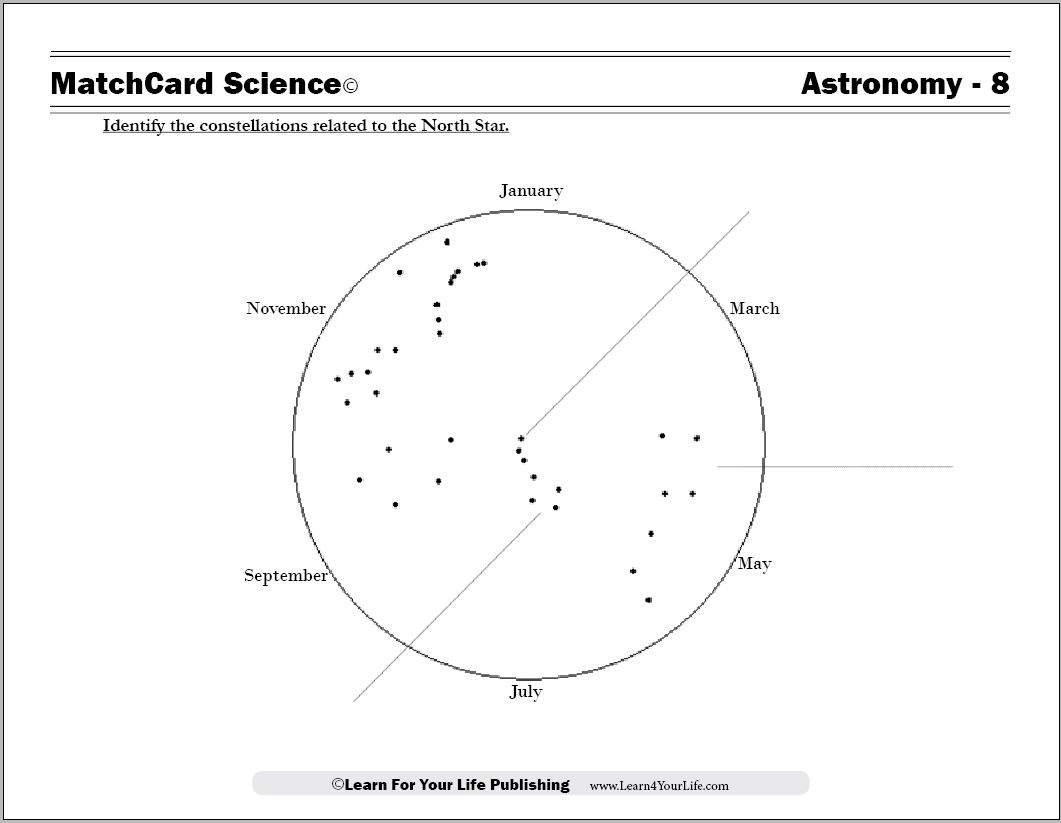
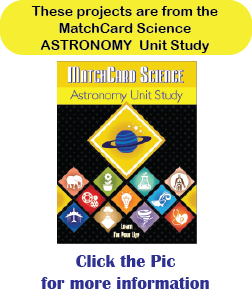
MatchCard Science Rocks and Minerals Worksheet
Worksheet Objective: Identify the constellations related to the North Star.MatchCard: Download below.
MatchCard Information Pieces match the names Ursa Minor and Ursa Major to the picture of Big Dipper and Little Dipper.
Download the Big Dipper Little Dipper MatchCard


Click image to go to download.
This is MatchCard #8 of the Astronomy Unit Study. Find more information on MatchCard Science below.
The North Star Location
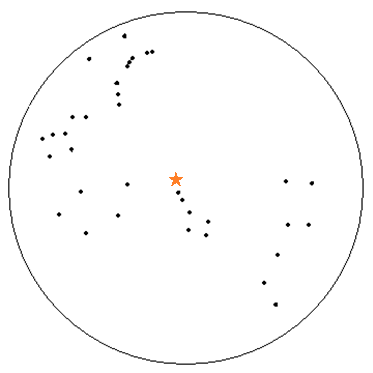
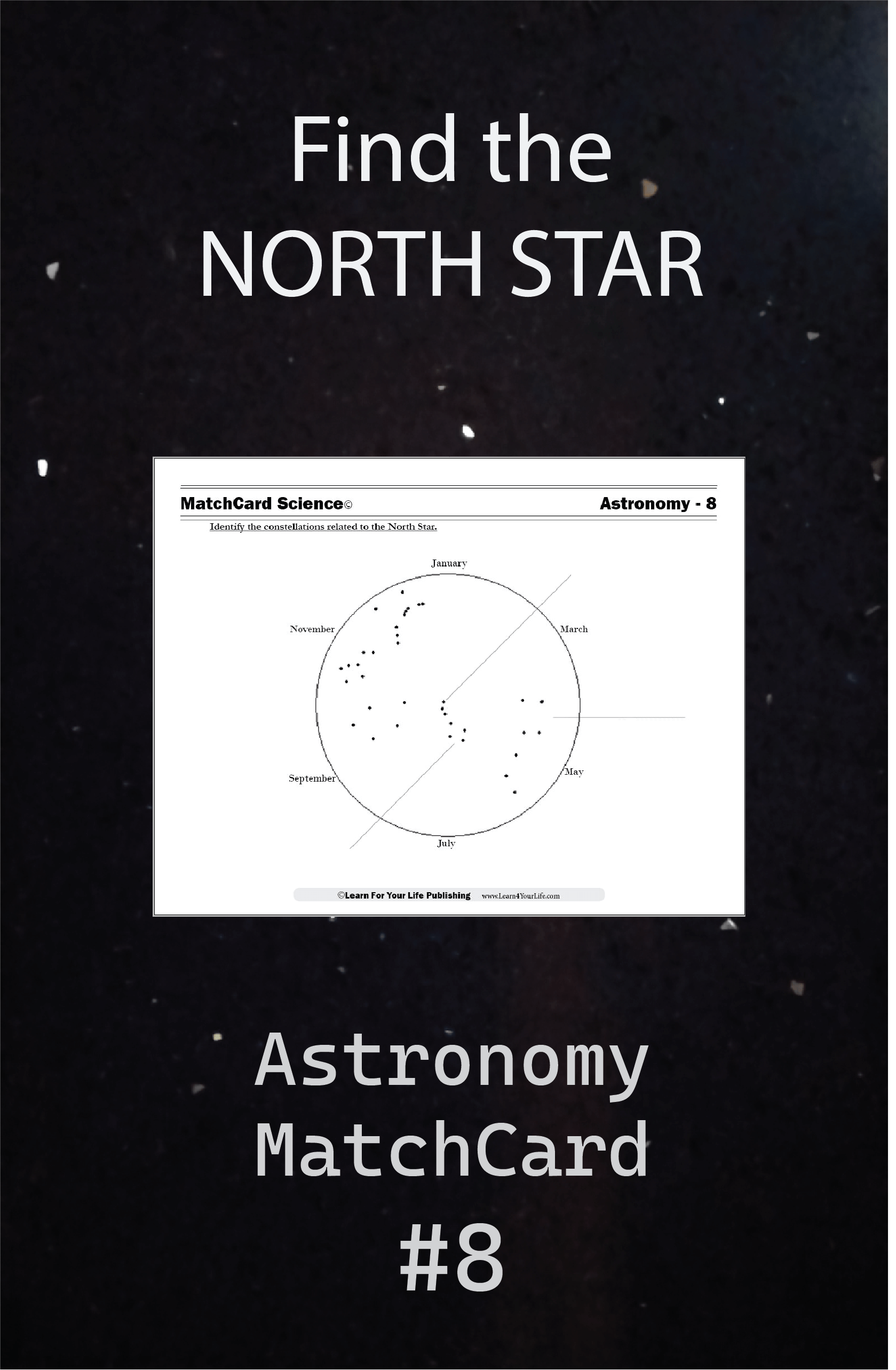
Polaris is the gem of the night sky. All other northern constellations are identified by first finding the North Star.
How To Find the North Star
1. Look for the Big DipperThe Big Dipper is the easiest constellation to find.
2. Find the two stars which make up the front of the Big Dippers pan.
These two stars are opposite of the handle of the pan on the Big Dipper.
3. Follow the path of those two stars with your eyes.
Direct your eyes to follow the path all the way north - or straight over head. It will direct your vision right to the North Star, Polaris.
Explain the North Star
Use a globe (or ball to represent the Earth) to demonstrate the North Star. Their is an imaginary axis running through the Earth. It would run through the North Pole.If that line continued to go straight it would run into the North Star. Anywhere in the Northern Hemisphere the North Star points to the North.
North is Not Up
Younger students may visualize North as being "up." Again, that 23 degree tilt of the Earth is important. The North Star (and the North Pole) are not straight up, but at that 23 degree angle.Polaris is the North Star
Asks where the name “Polaris” came from. Yes, it comes from the word “pole,” in this case the North Pole. The word polar also comes from the root root pole and refers to the North Pole. The North Pole is a real place, though their are no holiday personnel residing there. The important point for students is to realize that if one continues to follow the North Star, they would end up in the North Pole.Constellations of the Big Dipper and Little Dipper
Ursa Major Constellation
Ursa Major is the official name of the Big Dipper. It can be seen all year round.However, as the seasons of the month change, the location of Ursa Major appears to change. You can use a sky chart to track those seasonal changes.
Ursa Major is also part of the Great Bear Constellation. It takes much more imagination to see a bear than a dipper, however.
Ursa Minor Constellation
The Little Dipper is officially known as Ursa Minor. It is the younger cousin of Ursa Major, and a little bit harder to find because it doesn't look so obviously like a dipper.What makes Ursa Minor so special is that Polaris, the North Star, is located on this constellation at the very end of the handle.
Polaris is the only star who stays in the same place (Okay, almost in the same place. There is a tiny movement since it isn't 100% North, but close enough for us.)
Since Polaris is almost directly over the North Pole, it stays straight overhead all year round. But like Ursa Major, you will notice that Ursa Minor also changes positions throughout the year.
It almost looks like the North Star is a pin that connects the Little Dipper to the sky. The rest of the dipper appears to rotate around Polaris.
You may wish to review Earth's rotation vs revolution.
Make a Big Dipper/Little Dipper Sky Chart
To make this sky chart each student will need:- An extra copy of the student Matchcard
- a paper plate
- a paper brad
Second, write the names of the odd months on the calendar. You may wish to draw a line to help the student get a more accurate placement of those months between the even months.
Next cut the inside circle out carefully, only making one cut through the paper outside of the circle.
The next step is to glue the larger circle with the names of the months onto the paper plate. Center it carefully on the plate.
Make a small pin hole with a pin or nail through the center of the small circle. Make another small hole through the center of the paper plate. Use the paper brad to connect them.
MatchCard Sky Chart
While the non-moving wheel on the MatchCard is not as interactive, it still can be used to help locate Ursa Major and Ursa Minor. Hold the MatchCard in front of you so the current month is straight ahead. If it is January, you would be holding the paper in the usual direction. If it is July, you would be holding it upside down.All through The Year
The sky chart shows that Ursa Major and Ursa Minor appear to change positions relative to each other through the year. For instance, in January the Big Dipper is east of the Little Dipper. In July the Big Dipper is west of the Little Dipper.At different times of the year, those two constellations will also be higher or lower compared to the zenith and the horizon.
360 Degrees vs 365 Days
You know that 360 degrees equals one full circle. That means one day is just about one degree of a circle. The ancients were pretty good at measuring these things, but not exact.Using your paper plate, count the fluted edges. How many degrees for each flute?
Try to calculate the exact date on your sky cart.
Practice Finding the North Star
It's fun to go outside and look for Polaris. Pick a clear night and search for the Big Dipper together.Make it more fun and startyour own sky chart. Track how the direction of Ursa Major and Ursa Minor change over several months.
More Constellations
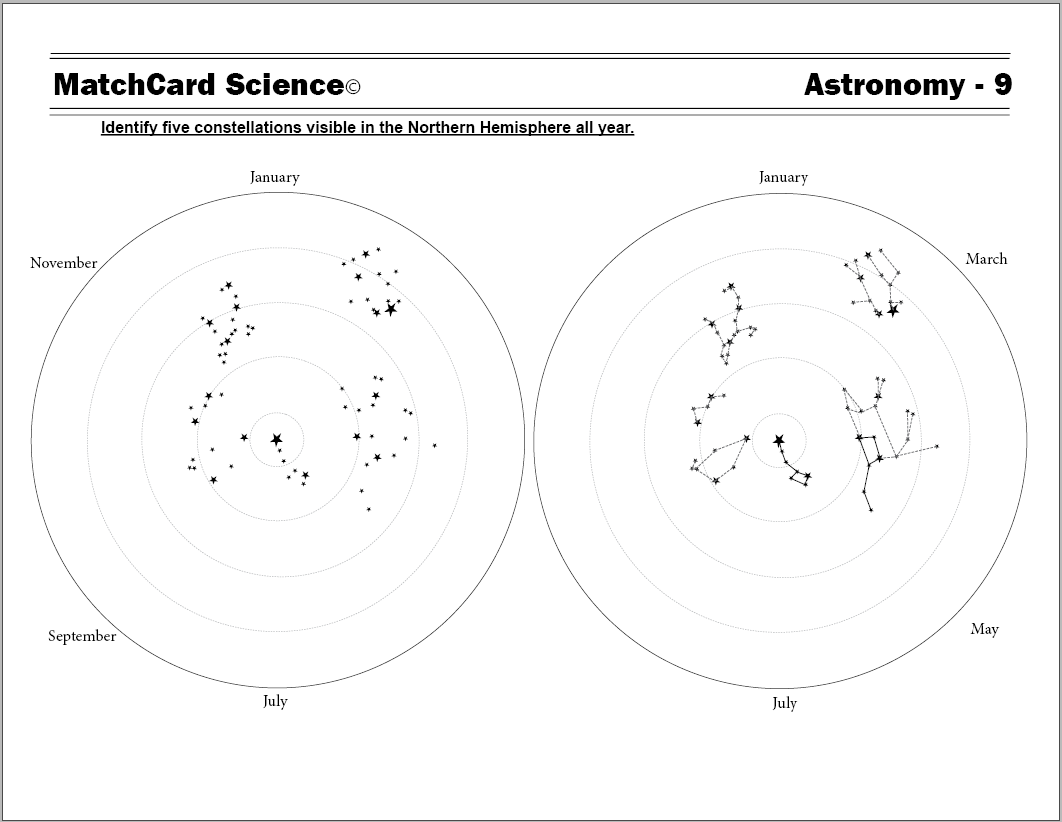
Teach your kids five more constellations in the northern hemisphere that are visible all year round.
MatchCard Science
How To Use MatchCards

Download the FREE MatchCard Science Instructor's Guide and see how MatchCards can make building their science knowledge base fun.
Astronomy Unit Study
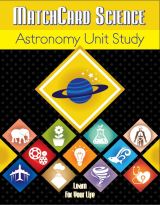
Explore the universe with the MatchCard Science Astronomy Unit Study..
12 Science Unit Studies

Chemistry is only one of twelve complete unit studies for kids in 3rd to 8th grade.
Comprehensive objectives, hands-on projects, suggested science fair experiments, and the fun game-like MatchCards keep them interested in learning science. See all twelve MatchCard Science Unit Studies.
About Our Site
Hands-On Learning













